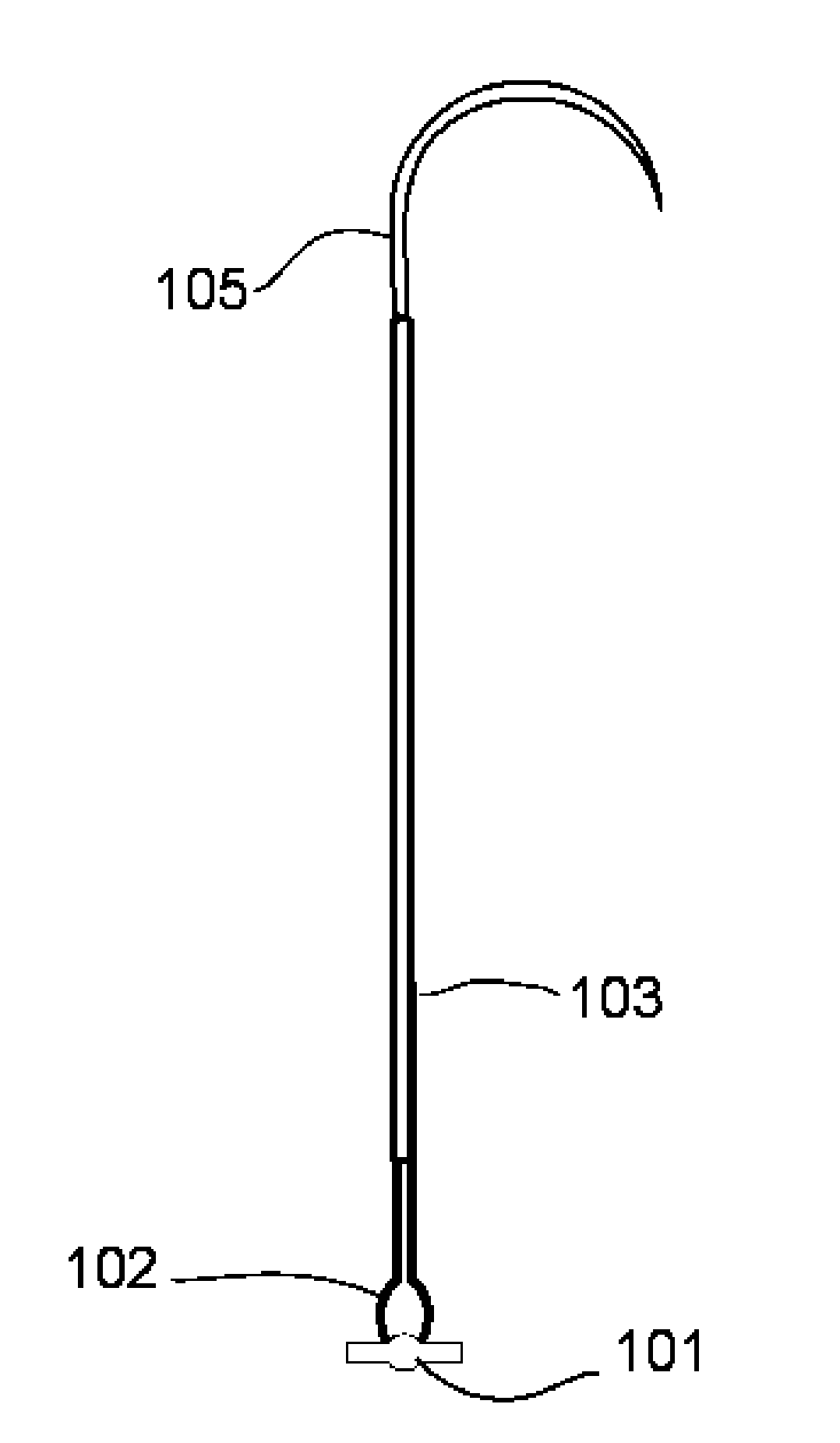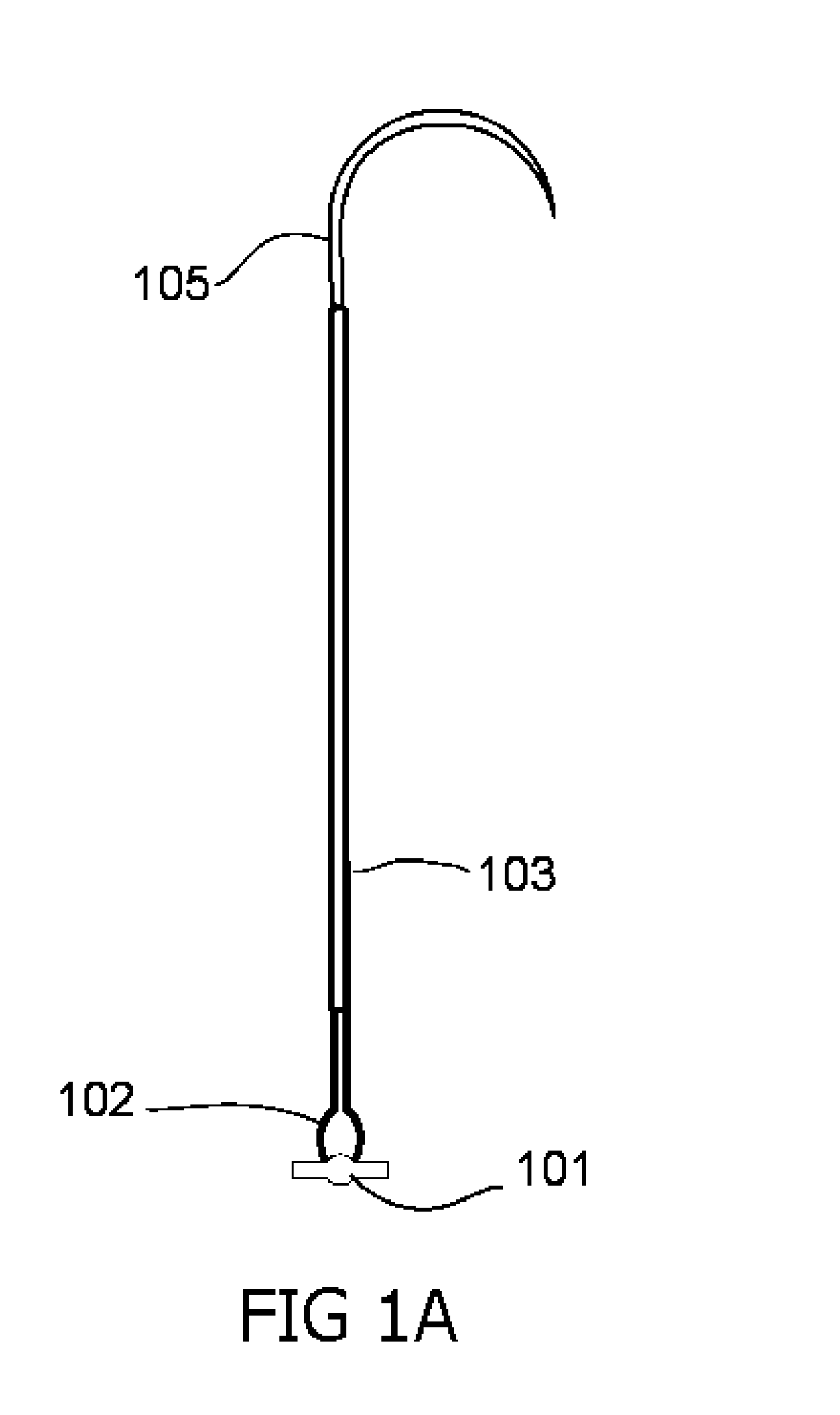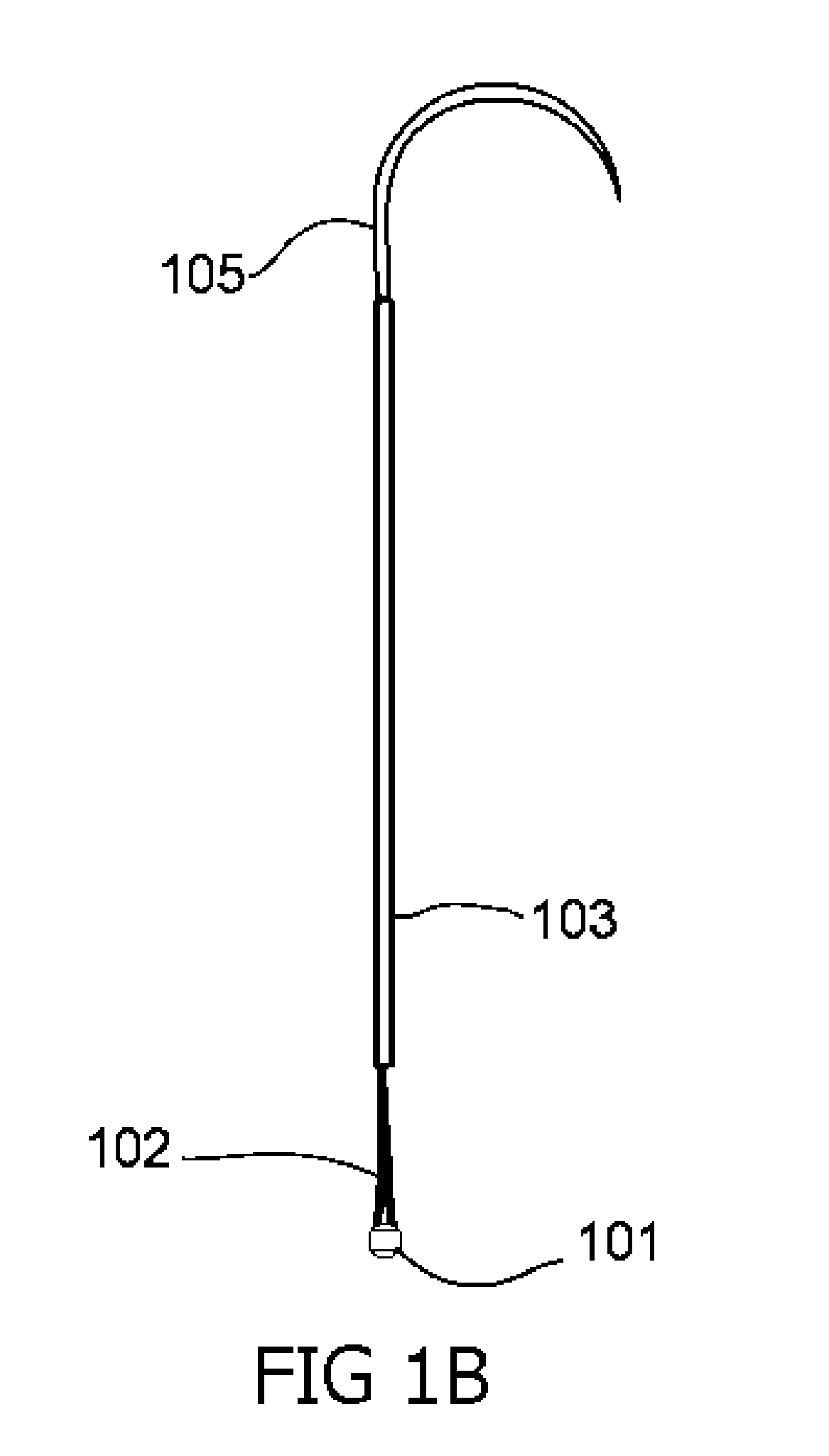Anchoring System for Valve Replacement
a technology of anchoring system and valve, which is applied in the field of anchoring system for valve replacement, can solve the problems of insecure fixation, the longest and slowest part of the anchoring process of the suture, and the most difficult portion of the valve replacement process, so as to simplify the cardiac valve replacement procedure and facilitate the passage of the riv
- Summary
- Abstract
- Description
- Claims
- Application Information
AI Technical Summary
Benefits of technology
Problems solved by technology
Method used
Image
Examples
Embodiment Construction
[0021] This present invention relates to apparatuses and methods for simplifying cardiac valve replacement involving a unique surgical rivet 100 shown schematically in FIGS. 1A-1B, used to attach a prosthesis sewing ring to a valvular annulus shown in FIG. 9A. The following description in conjunction with the drawings explains the details of the invention.
[0022] Referring to the drawings, and first to FIG. 1A, is the surgical rivet 100 comprise of a metallic pledget or stopper 101, two memory alloy preformed elements 102 encased in a protective sheath 103 causing the elements to be in a high tension or constrained state, attaching the memory alloy elements to a surgical needle 105. The two preformed elements 102 are wire composed of nitinol or some other memory alloy that can have a circular cross-section shown in FIG. 2A or non-circular cross-section shown in FIG. 2B to resist rotation about the elongated direction, permitting the fastener to also resist rotation. The two preforme...
PUM
 Login to View More
Login to View More Abstract
Description
Claims
Application Information
 Login to View More
Login to View More - R&D
- Intellectual Property
- Life Sciences
- Materials
- Tech Scout
- Unparalleled Data Quality
- Higher Quality Content
- 60% Fewer Hallucinations
Browse by: Latest US Patents, China's latest patents, Technical Efficacy Thesaurus, Application Domain, Technology Topic, Popular Technical Reports.
© 2025 PatSnap. All rights reserved.Legal|Privacy policy|Modern Slavery Act Transparency Statement|Sitemap|About US| Contact US: help@patsnap.com



